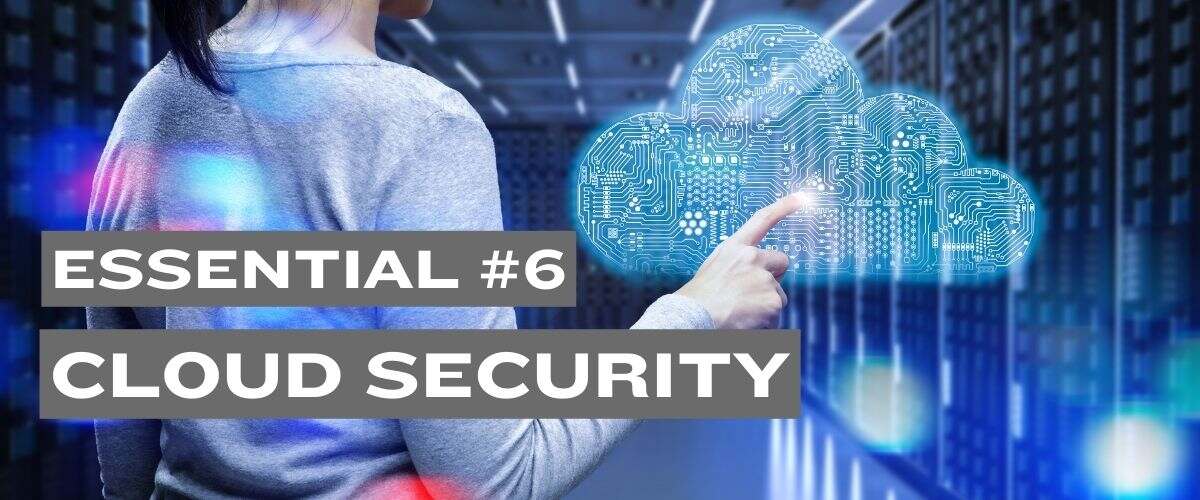Essential #6: Secure Your Cloud Infrastructures

Securing your cloud infrastructures is crucial in an increasingly connected world, where cloud infrastructures play a pivotal role in the digital transformation of businesses. However, migrating to the cloud also introduces new security challenges.
🔐 Objectives of Securing Your Cloud Infrastructures
- Protection of Sensitive Data: Ensure the confidentiality, integrity, and availability of your critical information.
- Regulatory Compliance: Adhere to current standards and regulations (GDPR, ISO 27001, etc.).
- Prevention of Cyberattacks: Reduce the risks of intrusions, data leaks, and service disruptions.
- Resource Optimization: Ensure efficient and secure utilization of cloud services.
🛠️ Concrete Actions to Secure Your Cloud Infrastructures
-
Understand Your Cloud Environment
- Asset Mapping: Identify all cloud services and resources.
- Risk Assessment: Analyze the specific threats to your architecture.
-
Adhere to Best Practices in Cloud Security
- Secure by Design Architecture: Design a cloud architecture with integrated security layers.
- Network and Resource Segmentation: Isolate different parts of your infrastructure to limit lateral movement of attackers.
-
Utilize Advanced Cloud Security Tools
- Cloud Security Posture Management (CSPM): Monitor and correct misconfigurations.
- Cloud Workload Protection Platforms (CWPP): Protect your applications and workloads in the cloud.
- Monitor and Respond to Cloud Endpoint Threats: (See Essential #4)
-
Implement Robust Identity and Access Management (IAM)
- Multi-Factor Authentication (MFA): Implement MFA to secure access.
- Principle of Least Privilege: Grant users only the access necessary for their roles.
- Monitor Access: Continuously oversee access rights and usage.
-
Encrypt Data in the Cloud
- Encryption at Rest and in Transit: Secure data using robust encryption protocols.
- Encryption Key Management: Properly manage encryption keys to maintain data security.
-
Cloud Incident Monitoring and Management
- Implement SIEM and SOAR Solutions: (See Essential #5)
- Configure Alerts and Notifications: Set up real-time alerts for anomalies. (See Essential #5)
- Develop a Cloud-Specific Incident Response Plan: Create response strategies tailored to cloud environments.
-
Provide Comprehensive Training and Awareness
- Train IT Teams: Ensure your IT teams are knowledgeable about cloud security best practices.
- Educate Users: Raise awareness among users about cloud security protocols and threats.
📈 Benefits of Securing Your Cloud Infrastructures
- Enhanced Security: Strengthen the protection of your cloud infrastructure.
- Increased Trust: Boost trust among stakeholders by demonstrating robust security measures.
- Flexibility and Scalability: Leverage the benefits of scalable cloud solutions while maintaining security.
- Cost Reduction: Optimize resources by automating repetitive tasks and focusing on critical security areas.
🔗 Stay Connected and Follow this Series
Follow our Blog to ensure you don't miss the upcoming posts in the "Security Essentials" series. By following this series, you will benefit from:
- Practical Advice: Concrete actions you can implement immediately to enhance your security posture.
- Proven Strategies: Approaches validated by cybersecurity experts to effectively combat threats.
- Recommended Tools: Technological solutions tailored to meet your specific security needs.
- Case Studies: Real-world examples demonstrating the effectiveness of best practices.
Whether you're an SME or a large enterprise, "Security Essentials" is designed to provide you with the knowledge and tools necessary to build a robust defense against cyber threats.
Together, let's build a strong and resilient defense against cyberthreats.





